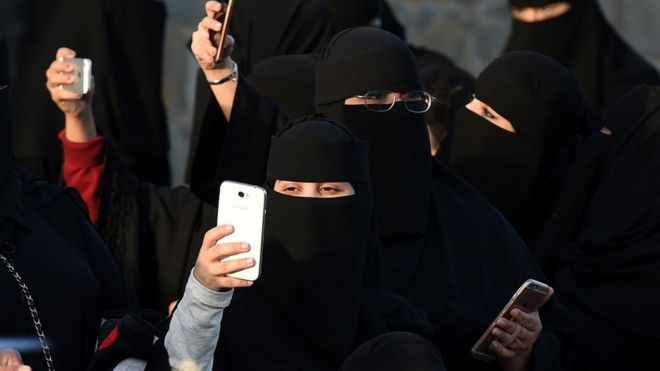U.S. Flag But Each Star Is Scaled To Their State’s Population and Geographical Position.

U.S. Flag But Each Star Is Scaled To Their State’s Population and Geographical Position.


Armi Kuusela from Finland was the first winner of the event. She was 17 at the time. She was awarded a box of chocolates, a gold bangle and a return ticket on Pan American Airways.

The contest was held on 28 June 1952 in Long Beach, California, USA.

Miss United Kingdom, Aileen P. Chase, who was a runner up in Miss World the previous year didn’t even make it into the semi finals.

Miss Hawaii, Miss Greece, Miss Hong Kong and Miss Germany were all runners up.







Blue eyes are a rare sight in Indonesia, a country where the vast majority of the population has dark hair and dark eyes, but some members of an indigenous tribe have the most stunning blue eyes, because of a rare condition known as Waardenburg Syndrome.
Believed to affect about 1 in 42,000 people, Waardenburg Syndrome is characterized by some degree of hearing loss and pigmentation deficiencies, which can include bright blue eyes (or one blue eye and one black/brown eye). It is caused by mutations in any of several genes that affect the operation of neural crest cells in embryonic development. The visual effect of Waardenburg Syndrome is particularly impressive in ethnic groups where blue eyes are a rarity, as you can see in the photos of members of the Buton tribe taken by Indonesian geologist and amateur photographer Korchnoi Pasaribu.

Buton Island, which is located in Indonesia’s Sulawesi region, is home to the indigenous Buton people, some of whom suffer from the Waardenburg Syndrome and have the characteristic electric blue eyes (either one or both).
Korchnoi Pasaribu visited Buton Island last month and took some photos of its natives, focusing on their stunning electric blue eyes. He posted the photos on his Instagram, and they have since gone viral, being picked up by most major news outlets and shared massively on social media.






| Census year |
Population |
|---|---|
|
|
|
| 1610 | 350 |
| 1620 | 2,302 |
| 1630 | 4,646 |
| 1640 | 26,634 |
| 1650 | 50,368 |
| 1660 | 75,058 |
| 1670 | 111,935 |
| 1680 | 151,507 |
| 1690 | 210,372 |
| 1700 | 250,888 |
| 1710 | 331,711 |
| 1720 | 466,185 |
| 1730 | 629,445 |
| 1740 | 905,563 |
| 1750 | 1,170,760 |
| 1760 | 1,593,625 |
| 1770 | 2,148,076 |
| 1780 | 2,780,369 |
| 1790 | 3,929,214 |
| 1800 | 5,308,483 |
| 1810 | 7,239,881 |
| 1820 | 9,638,453 |
| 1830 | 12,866,020 |
| 1840 | 17,069,453 |
| 1850 | 23,191,876 |
| 1860 | 31,443,321 |
| 1870 | 38,558,371 |
| 1880 | 50,189,209 |
| 1890 | 62,979,766 |
| 1900 | 76,212,168 |
| 1910 | 92,228,496 |
| 1920 | 106,021,537 |
| 1930 | 123,202,624 |
| 1940 | 132,164,569 |
| 1950 | 151,325,798 |
| 1960 | 179,323,175 |
| 1970 | 203,211,926 |
| 1980 | 226,545,805 |
| 1990 | 248,709,873 |
| 2000 | 281,421,906 |
| 2010 | 308,745,538 |


Population of Germany in 1939 was 67 million.





Ayres Rock, Australia: A Kangaroo warning road sign in the desert near Uluru




| Rank | Country | 2019 Population | 2018 Population | Growth Rate | Area | 2018 Density |
| 1 | China | 1,420,062,022 | 1,415,045,928 | 0.35% | 9,706,961 km² | 146/km² |
| 2 | India | 1,368,737,513 | 1,354,051,854 | 1.08% | 3,287,590 km² | 416/km² |
| 3 | United States | 329,093,110 | 326,766,748 | 0.71% | 9,372,610 km² | 35/km² |
| 4 | Indonesia | 269,536,482 | 266,794,980 | 1.03% | 1,904,569 km² | 142/km² |
| 5 | Brazil | 212,392,717 | 210,867,954 | 0.72% | 8,515,767 km² | 25/km² |
| 6 | Pakistan | 204,596,442 | 200,813,818 | 1.88% | 881,912 km² | 232/km² |
| 7 | Nigeria | 200,962,417 | 195,875,237 | 2.60% | 923,768 km² | 218/km² |
| 8 | Bangladesh | 168,065,920 | 166,368,149 | 1.02% | 147,570 km² | 1,139/km² |
| 9 | Russia | 143,895,551 | 143,964,709 | -0.05% | 17,098,242 km² | 8/km² |
| 10 | Mexico | 132,328,035 | 130,759,074 | 1.20% | 1,964,375 km² | 67/km² |
| 11 | Japan | 126,854,745 | 127,185,332 | -0.26% | 377,930 km² | 336/km² |
| 12 | Ethiopia | 110,135,635 | 107,534,882 | 2.42% | 1,104,300 km² | 100/km² |
| 13 | Philippines | 108,106,310 | 106,512,074 | 1.50% | 342,353 km² | 316/km² |
| 14 | Egypt | 101,168,745 | 99,375,741 | 1.80% | 1,002,450 km² | 101/km² |
| 15 | Vietnam | 97,429,061 | 96,491,146 | 0.97% | 331,212 km² | 294/km² |
| 16 | DR Congo | 86,727,573 | 84,004,989 | 3.24% | 2,344,858 km² | 37/km² |
| 17 | Turkey | 82,961,805 | 81,916,871 | 1.28% | 783,562 km² | 106/km² |
| 18 | Iran | 82,820,766 | 82,011,735 | 0.99% | 1,648,195 km² | 50/km² |
| 19 | Germany | 82,438,639 | 82,293,457 | 0.18% | 357,114 km² | 231/km² |
| 20 | Thailand | 69,306,160 | 69,183,173 | 0.18% | 513,120 km² | 135/km² |
| 21 | United Kingdom | 66,959,016 | 66,573,504 | 0.58% | 242,900 km² | 276/km² |
| 22 | France | 65,480,710 | 65,233,271 | 0.38% | 551,695 km² | 119/km² |
| 23 | Tanzania | 60,913,557 | 59,091,392 | 3.08% | 945,087 km² | 64/km² |
| 24 | Italy | 59,216,525 | 59,290,969 | -0.13% | 301,336 km² | 197/km² |
| 25 | South Africa | 58,065,097 | 57,398,421 | 1.16% | 1,221,037 km² | 48/km² |
| 26 | Myanmar | 54,336,138 | 53,855,735 | 0.89% | 676,578 km² | 80/km² |
| 27 | Kenya | 52,214,791 | 50,950,879 | 2.48% | 580,367 km² | 90/km² |
| 28 | South Korea | 51,339,238 | 51,164,435 | 0.34% | 100,210 km² | 512/km² |


A new regulation in Saudi Arabia is set to stop Saudi women from not knowing about their own divorce.
Starting from Sunday, courts will be required to notify women by text on rulings confirming their divorces.
Local female lawyers suggest the measure will end what are known as secret divorces – cases where men end a marriage without telling their wives.
The directive would ensure women are fully aware of their marital status and can protect rights such as alimony.
Last year, a decades-old driving ban on women was lifted in Saudi Arabia.
However, women still remain subject to male guardianship laws.
“The new measure ensures women get their [alimony] rights when they’re divorced,” Saudi lawyer Nisreen al-Ghamdi told Bloomberg. “It also ensures that any powers of attorney issued before the divorce are not misused.”
Many women have filed appeals to courts over being divorced without their knowledge, lawyer Samia al-Hindi told local newspaper Okaz.
The new step is said to be part of economic and social reforms pushed by Crown Prince Mohammed bin Salman, such as allowing women to attend football matches and work in jobs traditionally reserved for men.
There are many things that Saudi women are unable to do without permission from a male guardian, usually a husband, father, brother or son.
These things include, but are not limited to:
The guardianship system has helped create one of the most gender unequal countries in the Middle East.

BBC
The Brazilian government has confirmed the existence of a previously unknown group of so-called uncontacted people who have remained isolated from industrial society.
The Brazilian government agency charged with protecting the country’s indigenous tribes took aerial photographs of the group’s Amazon dwellings. The photos were released by Survival International, an advocacy group for indigenous people.
Survival International research director Fiona Watson talked to Wired.com about the photos.
House
The structure of the dwelling is very different from those seen in photographs of another uncontacted Amazon group that were released in February. Unlike those small, open dwellings, these are large and enclosed.
“Probably 20 or 30 people could fit in there,” said Watson. “You can see smaller structures toward the back of the house. These could be areas for cooking, or storing things. I’ve been to indigenous villages where they have separate structures for keeping the large birds from which they pluck feathers to make arrows.”
Below are photographs taken of an uncontacted group found along the Peru-Brazil border in 2008. These jungle inhabitants seem annoyed, or terrified, at the airplane taking the pictures. They are pointing their arrows at the plane. This plane must have blown their minds. Never would they have seen such a large bird of prey. They must have thought this giant rigid bird was going to pounce on their people. Some of them look like medicine shamans, painted in a dark colour.
Uncontacted people, also referred to as isolated people or lost tribes, are communities who live, or have lived, either by choice or by circumstance, without significant contact with globalised civilisation.
Few peoples have remained totally uncontacted by modern civilisation, and almost all current groups are in danger of being unwillingly contacted. Indigenous rights activists call for such groups to be left alone in respect of their right to self-determination. A number have chosen to make contact either exceedingly difficult or dangerous for those trying to reach them.
The majority of such communities are located in densely-forested areas in South America and New Guinea. Knowledge of the existence of these groups comes mostly from infrequent (and often violent) encounters by neighbouring tribes, and also from aerial footage. A major problem with contacting isolated people is that they will lack any immunity to common diseases, which can be devastating to a closely-contained population with no natural immunity.
Areas of the world where uncontacted peoples live.



| Country | 60 kilogram bags | Metric Tons | Pounds |
|---|---|---|---|
| 43,200,000 | 2,592,000 | 5,714,381,000 | |
| 27,500,000 | 1,650,000 | 3,637,627,000 | |
| 13,500,000 | 810,000 | 1,785,744,000 | |
| 11,000,000 | 660,000 | 1,455,050,000 | |
| 6,400,000 | 384,000 | 846,575,000 | |
| 5,800,000 | 348,000 | 767,208,000 | |
| 5,800,000 | 348,000 | 767,208,000 | |
| 4,800,000 | 288,000 | 634,931,000 | |
| 3,900,000 | 234,000 | 515,881,000 | |
| 3,400,000 | 204,000 | 449,743,000 | |
| 3,200,000 | 192,000 | 423,287,000 | |
| 2,200,000 | 132,000 | 291,010,000 | |
| 1,947,000 | 116,820 | 257,544,000 | |
| 1,800,000 | 108,000 | 238,099,000 | |
| 1,492,000 | 89,520 | 197,357,000 | |
| 833,000 | 49,980 | 110,187,000 | |
| 800,000 | 48,000 | 105,821,000 | |
| 800,000 | 48,000 | 105,821,000 |
